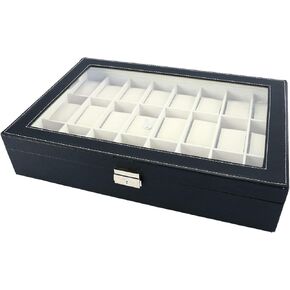- Shopping, made easy.
- /
- Get the app!
Professional Timegrapher
If you notice your watch seems to be gaining or losing time consistently, it might be time for a regulation. But don't worry, although regulation is a job usually delegated to watchmakers, with our professional timegrapher, you can regulate your watch at home as well.
Specifications:
1. Rate - How fast/slow the watch runs in seconds per day.
If it is wildly out of these ranges, you should bring it to a watchmaker to get it checked out.
Excellent - +/- 7 s/d
Acceptable - +/- 20 s/d
2. Amplitude - the amount of rotation in the swing of the balance wheel
A healthy movement should, at full wound, have a high amplitude.
A low amplitude generally indicates problems that needs to be fixed prior to regulation, like obstruction due to foreign elements, oil drying up, etc, but anything above 250 degrees can still be considered healthy amplitude.
Excellent : 270-310
Acceptable : 250-270
3.Beat Error
It's the time difference between the “tick” and the “tock”.
Excellent : 0.0 - 0.5 milliseconds
Acceptable : 0.6 - 1 milliseconds
4.Parameters(Beat)
This figure should alternate between two numbers: one 5-digit number, and one number in degrees. The 5-digit number is the beat frequency, meaning how many ticks are there within a second.
Standard bph ratings:
14,400 bph = 4 beats per second
18,000 bph = 5 beats per second
21,600 bph = 6 beats per second
28,800 bph = 8 beats per second
36,600 bph = 10 beats per second
The degree is Lift Angle, this should be set manually prior to using the timegrapher, the reason you need to input this into the Timegrapher is so that you can calculate the amplitude. And you can find the exact number from the official specs of a movement. Most modern watches have a lift angle of 52 degrees
 Timegrapher No.1900, Multifunctional Watch Tester, Watch Timing Machine for Watchmaker, Watch Calibration Tool with LCD Screen
KWD 91
Timegrapher No.1900, Multifunctional Watch Tester, Watch Timing Machine for Watchmaker, Watch Calibration Tool with LCD Screen
KWD 91
 RICHIE Travel Jewelry Case Organizer Jewelry Rolls Jewelry Bags Storage Box Zipper Pouch Bag Travel Essentials for Necklaces, Earrings, Rings, Bracelets, Watch for Women Girls (Black)
KWD 4
RICHIE Travel Jewelry Case Organizer Jewelry Rolls Jewelry Bags Storage Box Zipper Pouch Bag Travel Essentials for Necklaces, Earrings, Rings, Bracelets, Watch for Women Girls (Black)
KWD 4
 DasMarine 24 Slot Watch Display Case,PU Leather Watch Case for Men and Women,Watch Holder Organizer Acrylic Top,Watch Box with Key Lock
KWD 13
DasMarine 24 Slot Watch Display Case,PU Leather Watch Case for Men and Women,Watch Holder Organizer Acrylic Top,Watch Box with Key Lock
KWD 13
 Gadgetime USA Watch Back Closer - Watch Base Cover - Watch Repairing Accessories - Watch Back Closing Tool - Wrist Watch Press - New & Improved
KWD 5.500
Gadgetime USA Watch Back Closer - Watch Base Cover - Watch Repairing Accessories - Watch Back Closing Tool - Wrist Watch Press - New & Improved
KWD 5.500